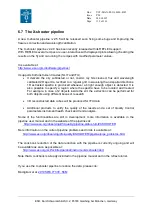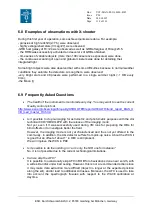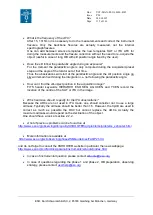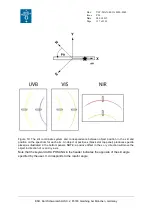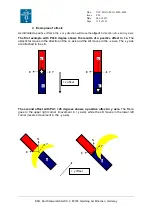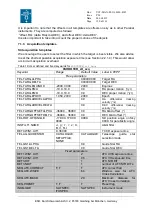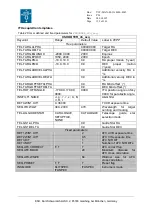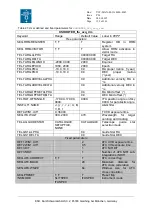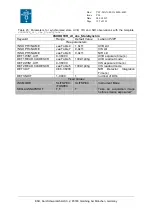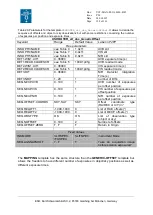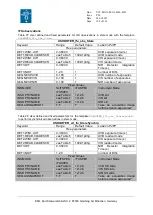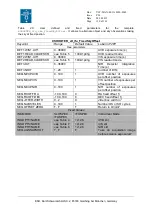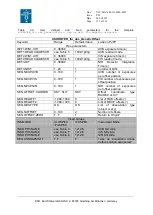
Doc:
Issue
Date
Page
VLT-MAN-ESO-14650-4942
P96
24.06.2015
116 of 161
ESO, Karl-Schwarzschild-Str. 2, 85748 Garching bei München, Germany
7.
Reference material
7.1 Templates reference
In the following sections all the currently defined X-shooter templates are listed with their free
and fixed parameters. When using the P2PP tool the user has to fill only the fields
(keywords) shown on white background colour in the following tables. Keywords shown on
gray background colour are fixed within the template itself and can only be modified by the
astronomer operating the instrument during the night or during daytime calibration activities.
7.1.1 Orientation and conventions
X-shooter follows the standard astronomical offset conventions and definitions.
The positive position angle (PA) is defined from North to East. This is the value that should
be entered in the TEL.ROT.OFFANGLE in all the acquisition templates to set the slit position
angle on the sky. The fits header keyword HIEARCH ESO ADA POSANG is all X-shooter
data is
minus
the position angle of the slit on the sky. Note that the value “9999” can be used
to set the position angle to the parallactic angle. Note also that the parallactic angle is that at
the time of the preset/acquisition. The slit is not maintained at the parallactic angle during the
science exposure.
Offsets are always given in arc seconds, but the reference system can be chosen to be the
sky (Alpha, Delta) or X-shooter slit coordinate system (X,Y). Offset conventions are
illustrated below. Templates use
cumulative offsets
: the position at a given time is derived
from the
sum
of all offsets specified so far in the template. For example, the series of offsets:
0, -10, 0, 10 brings the telescope back to the original position for the last exposure. This
example could have been for instance the definition of a series in which we define an
exposure on object, followed by two sky exposures at -10”
of the original position, before
pointing back on the object for the fourth exposure.
A
B
C
D
E
N
E
Other example of series of offsets:
offset A= (RA= + 10”, DEC=0”); offset B= (RA=0”, DEC= + 10”),
offset C= (RA= - 20”, DEC=0”), offset D= (RA= 0”, DEC= - 10”), offset E= (RA= +10”, DEC=0”).
And the telescope is back to the original position.












